Mitarashi dango are chewy and fluffy rice dumplings brushed with a sweet, earthy, and savory glaze. Similar to mochi or other chewy sweet rice flour based confection, these Japanese dumplings are a popular Japanese snack for all seasons that everyone, from children to adults, love eating. This recipe can be made in about 20 minutes, from start to finish.
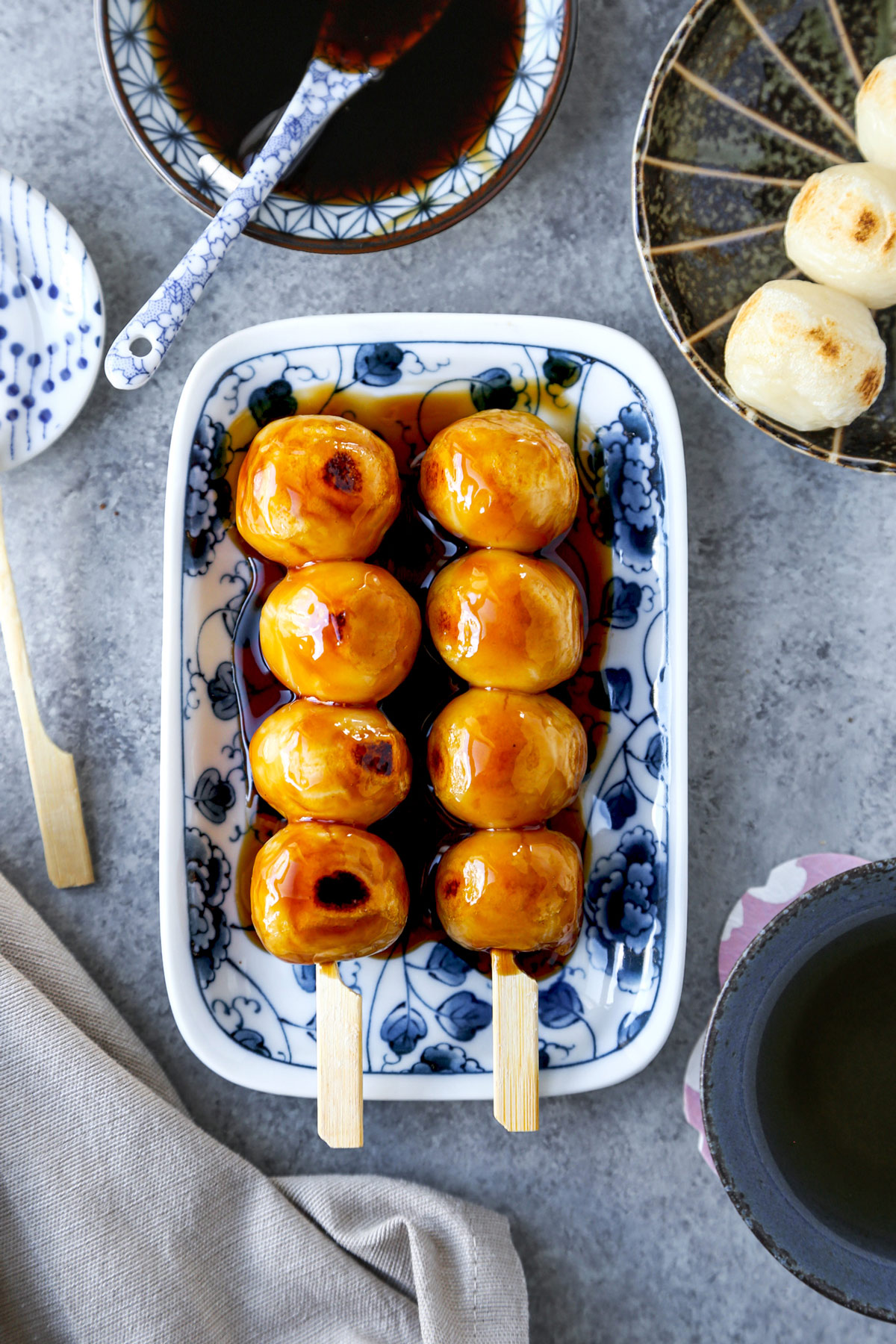
Mitarashi dango is one of my favorite Japanese confections. Every bite takes me back to my childhood and the summers I spent in southern Japan, dressed in a yukata for omatsuri festivals (summer celebrations) filled with spectacular fireworks, fun games for kids, and delicious food from street vendors. It’s a popular Japanese snack that can be found in convenience stores, supermarkets, yatais (street vendors), department stores, specialty stores, and traditional Japanese restaurants.
I have been making my own mitarashi dango for years now because very easy and much cheaper to make at home. The taste is something special and very Japanese – sweet rice dumplings glazed with a soy infused glaze that’s sweet, smoky, and savory.
Why this recipe works
- Quick and easy. Making dango is very easy and only takes a few minutes to make.
- Perfect for kids and grownups. This popular Japanese snack is chewy and sweet enough, without being too sweet, to satisfy both kids and adults.
- Balance of flavors. Aside from being sweet, the glaze is also savory and earthy, which gives mitarashi dango a unique taste.
Table of contents
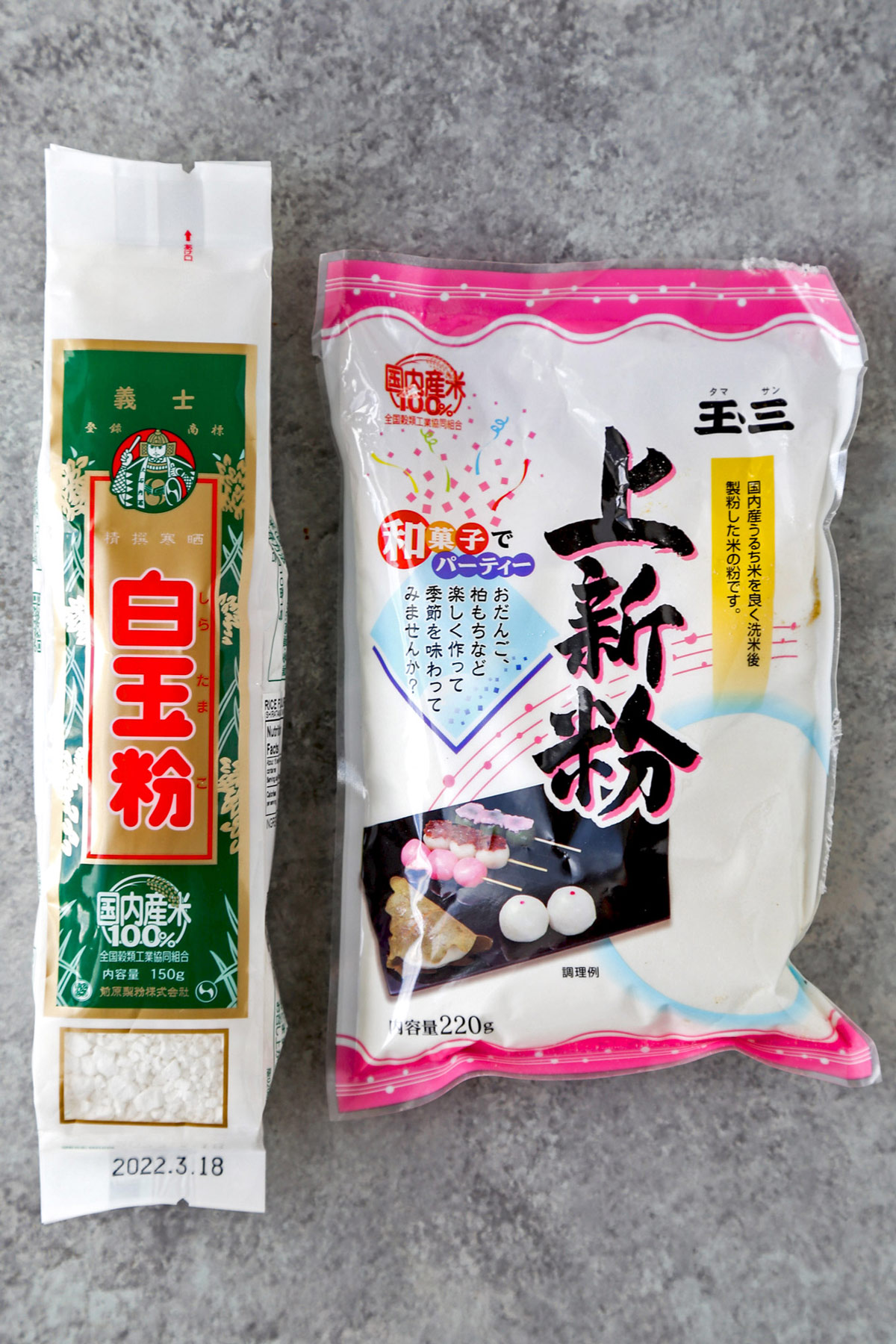
Best Flour For Dango
Here are three common types of flours used to make these delicious Japanese dumplings:
- Shiratamako (白玉粉): Shiratamako rice flour is made from mochigome which is a type of Japanese glutinous rice that has a mild sweet taste. The grains are big and thick and look quite coarse. But when mixed with water, this sweet rice flour becomes extremely smooth and stretchy, which is why it’s a favorite for dango.
- Mochiko (もちこ): Mochiko rice flour is also a type of glutinous rice flour, very similar to shiratamako, that has a sweet rice flavor. The main difference between the two is in the size of the grains – while shiratamako grains are coarse and thick, mochiko grains are much more fine. Mochiko is also used to make mochi, which is another type of Japanese dumpling. You can read more about mochi and how to make it in this post.
- Joshinko (和菓子): Joshinko rice flour is made from high quality white rice. It’s extremely fine, almost like talcum powder, and tastes like premium Japanese rice. It also has a very stretchy texture once it’s mixed with water, making it an excellent choice for unbaked sweets.
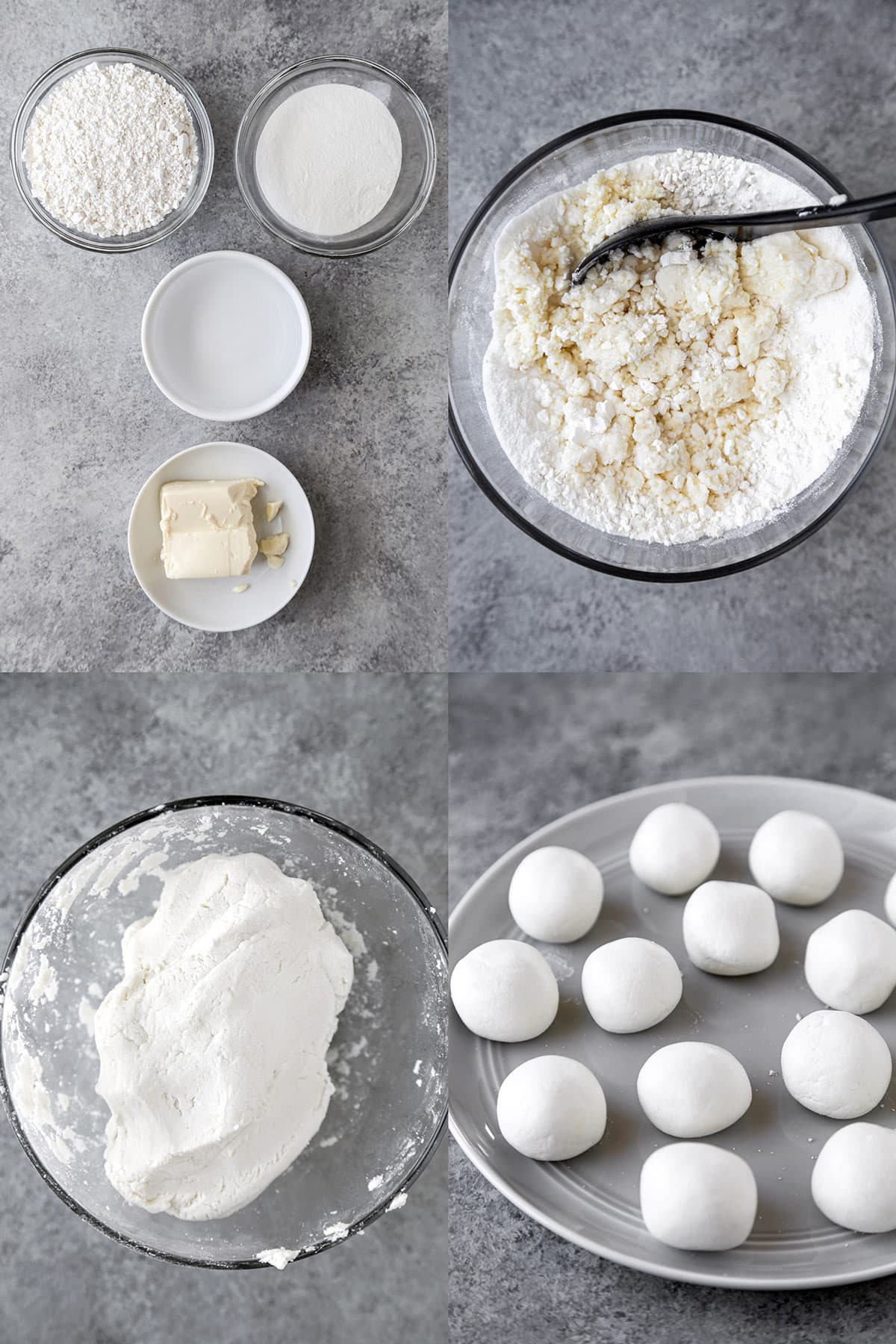
Ingredients
- Rice flour: I’m using a mix of shiratamako flour and joshinko flour for this recipe but feel free to use your own recipe for dango if you already have one.
- Silken tofu: Beside having a high water content, silken tofu adds smoothness and a slight sweetness to the rice dumplings.
- Water: Water is mixed with rice flour and silken tofu to create a dough that will be used to make the dumplings.
- Mitarashi glaze: A mix of soy sauce, mirin, sugar, potato starch, and water.
Variations
There are many ways of serving dango aside from a sweet mitarashi glaze. Here a two of my favorites:
- With roasted soybean flour: Called kinako dango, this type of dango is served dusted with roasted soybean flour, sugar, and a pinch of salt.
- Anko dango: This type of dango is served topped with anko bean paste which is sweet and earthy.
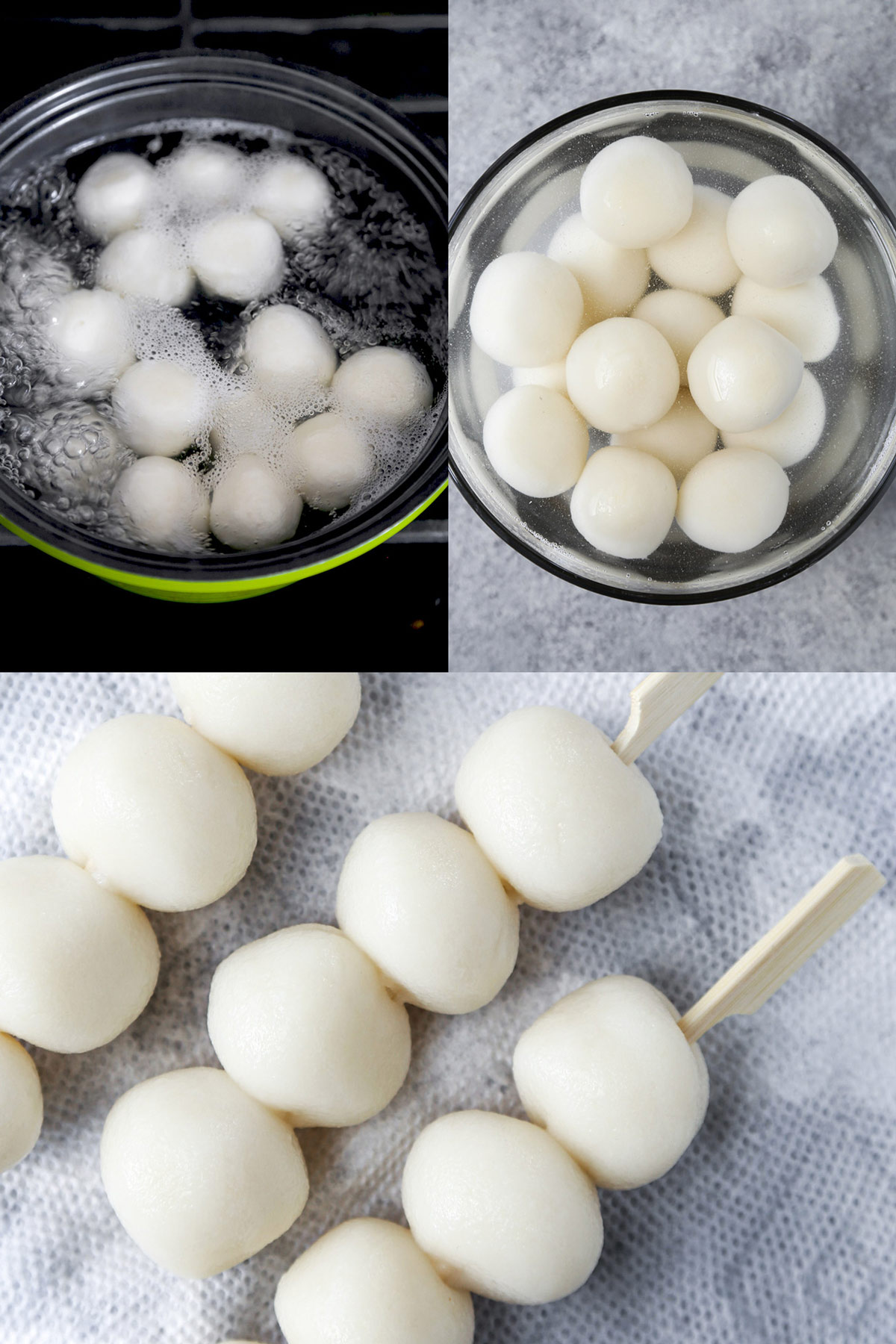
Kitchen Equipment
- Bowls: One to make the dumpling dough and another one to cool the dumpling in water.
- Bamboo skewers: 5 skewers are needed to thread the dumplings.
- Pots: One small cooking pot to make the glaze and a medium cooking pot to boil the rice flour dumplings.
- Strainer: To drain the boiled dumplings.
- Whisk: To stir the glaze. A whisk helps to break down the cornstarch so it doesn’t get clumpy.
- Spoon or basting brush: To spread the mitarashi glaze over the dango.
How to Make This Mitarashi Dango Recipe
- Gather all of your kitchen tools and ingredients.
- Bring a medium pot of water to boil.
- Make the dumpling dough by mixing both flours and the tofu. Slowly add the water and mix using your hands until a dough is formed.
- Make the dumplings by scooping about 1 tablespoon of the dough and roll it between your palms to shape into a ball. Set the ball on a plate and repeat this step until all the dough has been used.
- Boil the dango balls until they float to the surface and use a small strainer to transfer them to the ice bath.
- Dry the dumplings with paper towels and thread 3 to 4 on a skewer. Repeat this step until all the dumplings have been used.
- Place the skewers in a hot skillet and char the dango until they are golden brown on all sides. Transfer them to a serving plate.
- Make the mitarashi glaze by whisking the ingredients in a pot over medium low heat. Keep whisking until the sauce bubbles and thickens.
- Turn the heat off and pour some of the glaze over the dango skewers. Serve.
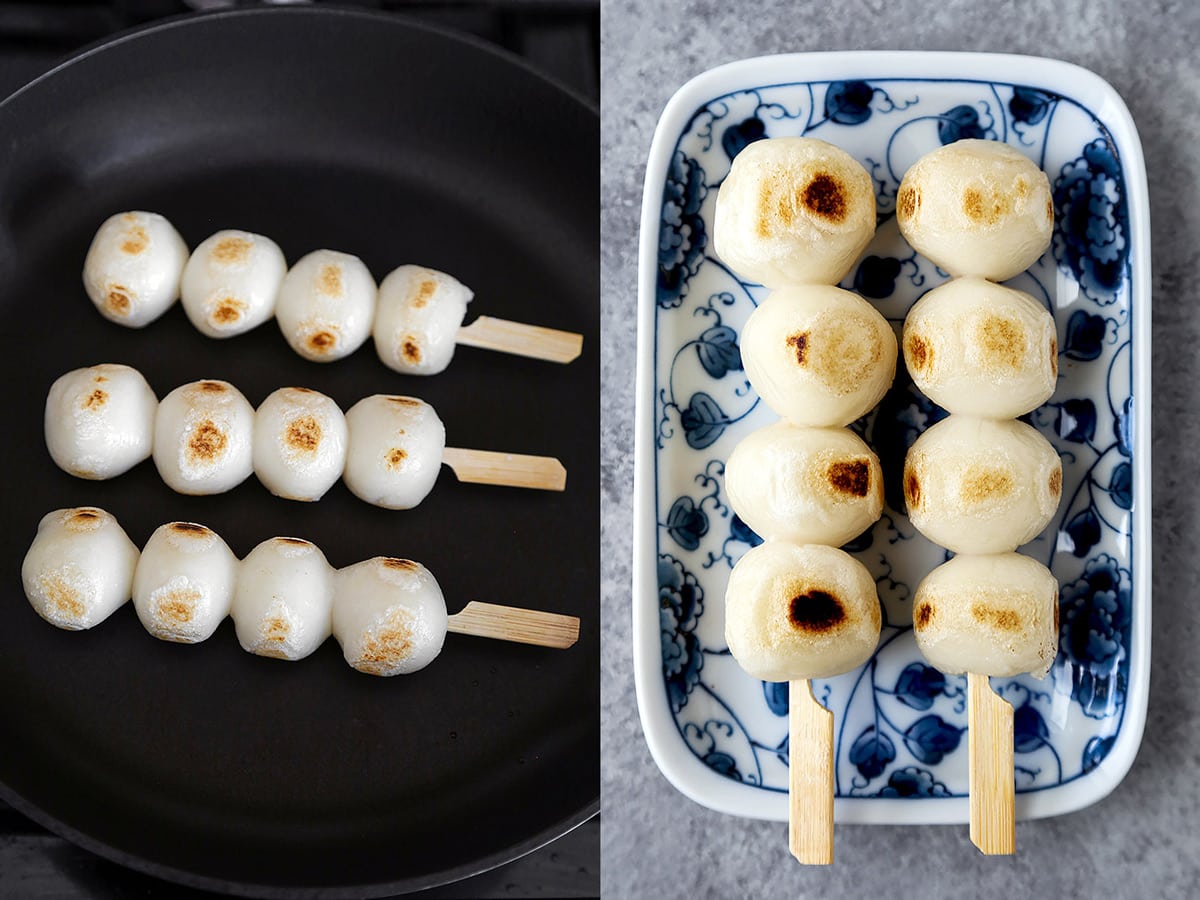
Storage and Reheating
Mitarashi dango will last for up to 3 days when stored in the fridge in an airtight container. If it’s left on the counter it will not keep for more than a day.
Reheating: Microwave the dango skewers for 15-20 seconds, until they are soft, and microwave the sauce until it’s warm.
Other Traditional Japanese Snacks
While Japanese cuisine is known for dishes such as nasu dengaku, curry rice, ramen and sushi, they also excel at making delicious sweets.
What I particularly enjoy about them is that they are never too sweet or too filling. They are just the right size and have the perfect amount of sweetness which keeps me going back for more. Some of my favorites are:
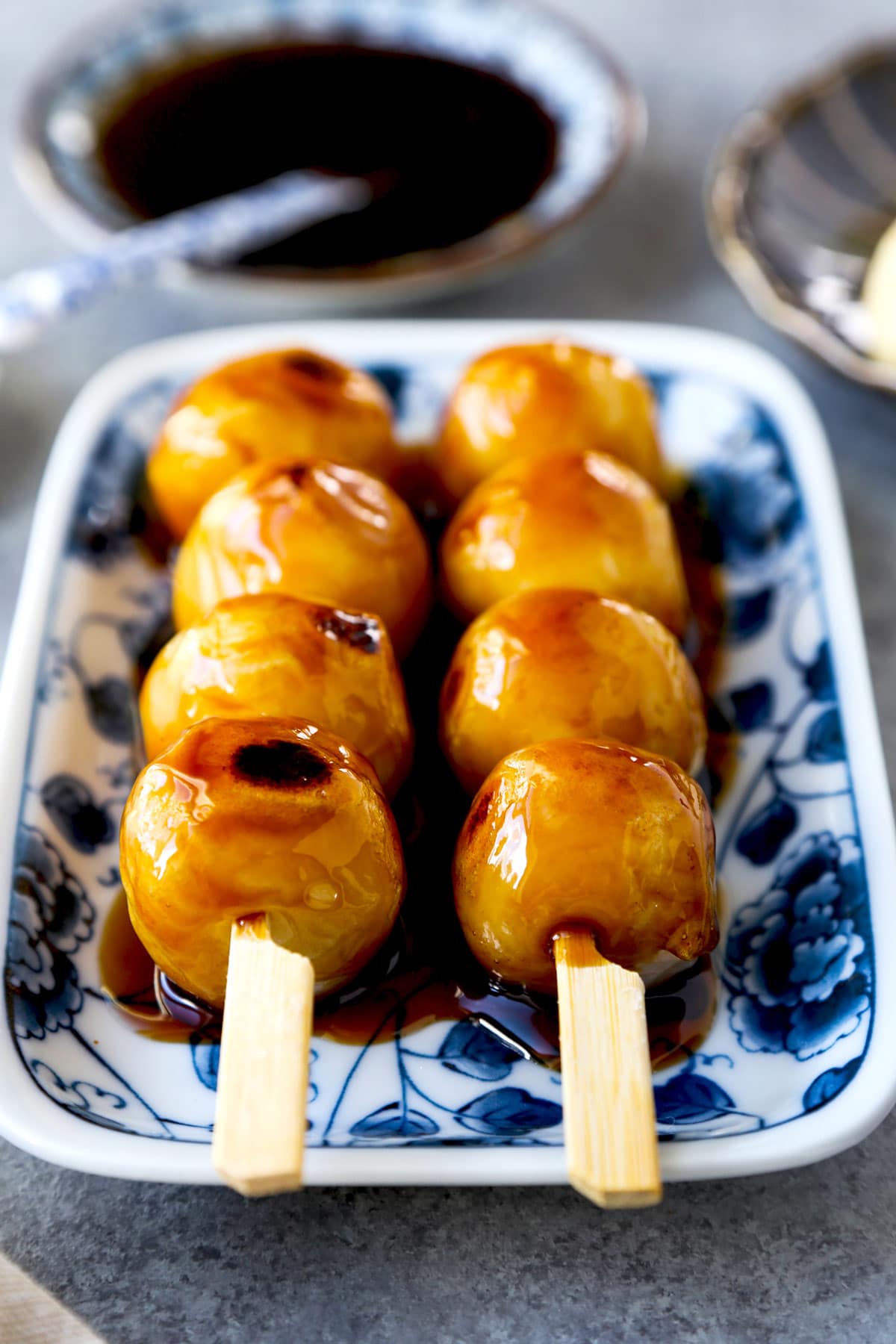
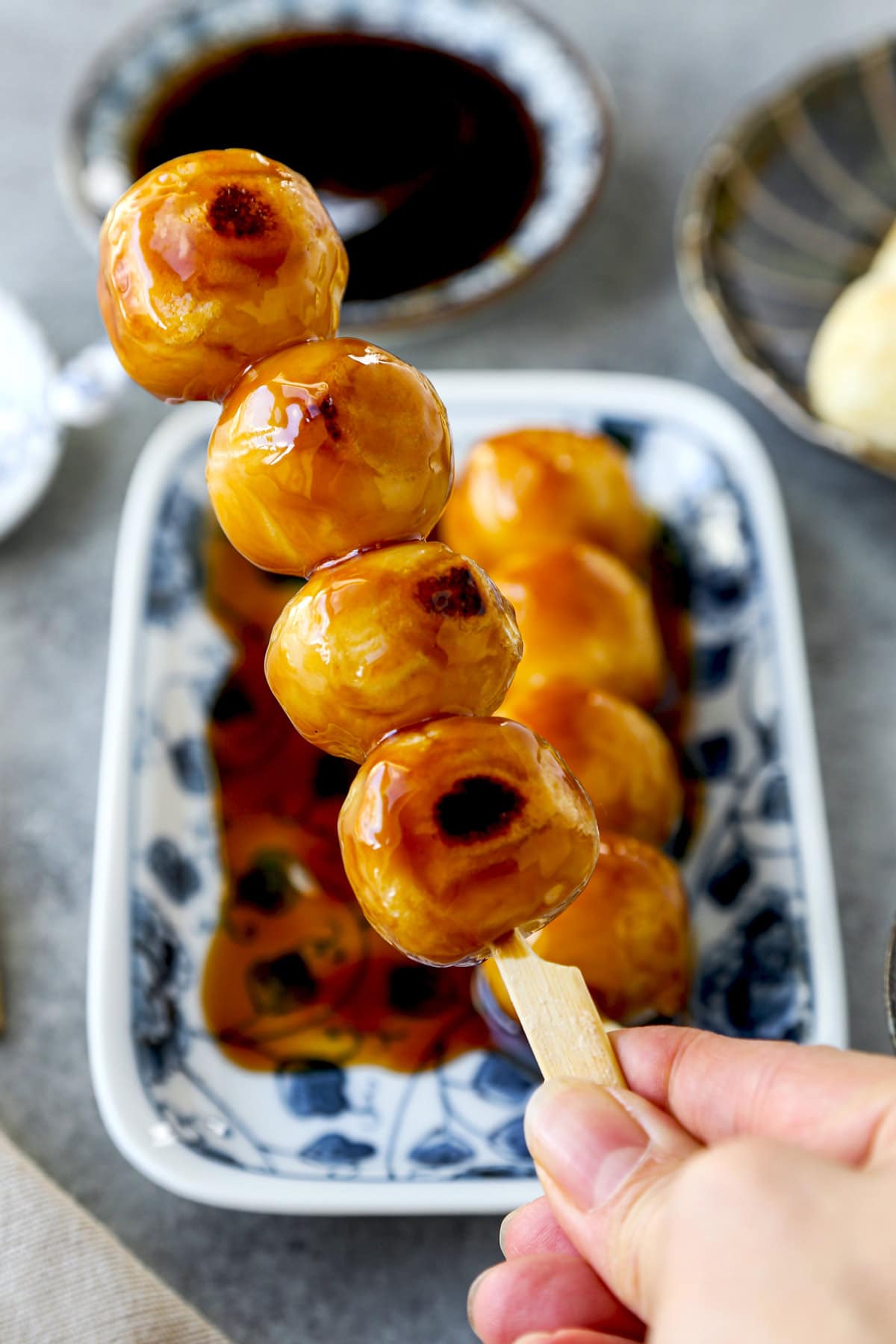
Frequently Asked Questions
Mitarashi dango can be eaten cold but is typically served warm so the texture of the rice dumplings is soft and chewy. When purchased cold, it’s best to microwave the skewers for 15 to 20 seconds, to soften both the glaze and the dumplings.
There are no words for mitarashi dango in English. The term mitarashi refers to a purifying water fountain located at the entrance of a shrine where people go to wash their hands. And the term dango, which literally translates to “rounded shaped object” is a Japanese rice dumpling.
Mitarashi dango can be purchased in most Japanese supermarkets in the refrigerated section. They are also sometimes available in Chinese and Korean grocery stores.
Subscribe to my newsletter and receive the latest recipes and weekly favorites straight to your inbox. Join me on Pinterest, Facebook, and Instagram for more cooking tips and adventures!
Did you like this recipe? Are there changes you made that you would like to share? Share your tips and recommendations in the comments section below!
Print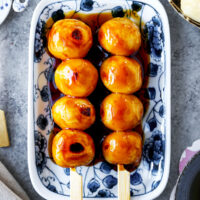
Mitarashi Dango
- Prep Time: 15 minutes
- Cook Time: 5 minutes
- Total Time: 20 minutes
- Yield: 4–5 skewers 1x
- Category: Appetizer
- Method: Boiling
- Cuisine: Japanese
- Diet: Vegan
Description
Mitarashi dango are chewy, fluffy rice dumplings served on skewers and brushed with a sweet and savory soy glaze.
Ingredients
Dango
- 100g shiratamako rice flour
- 60g joshinko rice flour
- 50g silken tofu, drained
- 100ml water
Mitarashi Glaze
- 1/4 cup soy sauce
- 1 1/2 tablespoon mirin
- 4 tablespoons granulated sugar
- 1 tablespoon potato starch or cornstarch
- 1/3 cup cold water
Instructions
- Boil the water. Bring a medium or large pot of water to boil.
- Make the dango dough. Meanwhile, add the shiratamako flour, joshinko flour and silken tofu to a bowl. Mix well and slowly add the water. Use your hands to mix the ingredients until they turn into a dough and shape into a ball.
- Roll the dough into balls. Scoop about 1 tablespoon of the dough and shape into a ball by rolling it between the palms of your hands. Set aside and repeat this step until all the dough has been used.
- Make an ice bath. Fill a bowl with cold water and ice and set aside.
- Boil the dango. When the water is boiling, add one dango ball at a time until they are all in the pot. Stir occasionally so they don’t stick to the bottom or together.
- Cool the dango. When the dango balls start floating, boil for an additional 1 minute and transfer them to the bowl of ice water. Let them cool for about 5 minutes.
- Pat the balls dry. Take the dango balls out of the water and transfer them to a paper towel to let them dry.
- Make dango skewers. Add 3 or 4 dango a skewer for a total of 4 to 5 skewers.
- Warm up the skewered dango. Use a large non-stick skillet over medium low heat and add the dango skewers. Cook until there is a slight char on them. Turn the heat off and transfer the skewers to a plate.
- Make the sweet glaze. Put all the ingredients for the mitarashi glaze in a pot and whisk until the potato starch has dissolved. Turn the heat to medium and stir constantly until the liquid starts to bubble and thicken. Turn the heat off.
- Serve. Pour the glaze over the dango skewers and serve immediately.
Notes
Save mitarashi dango in an airtight storage container and refrigerate for up to 3 days.
Nutrition
- Serving Size: 1 skewer
- Calories: 235
- Sugar: 15.9g
- Sodium: 483.7mg
- Fat: 0.9g
- Saturated Fat: 0.2g
- Unsaturated Fat: 0.3g
- Trans Fat: 0g
- Carbohydrates: 51.4g
- Fiber: 1.1g
- Protein: 4.2g
- Cholesterol: 0mg















safari will not open page…
Hi Reiko, our hosting provider had issue earlier. That may be why you had trouble opening the page. Would you mind trying again?